 July
24
July
24
Tags
The Forgotten Abstractions of Ana-Eva Bergman
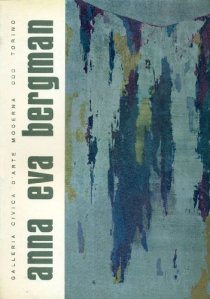 On the 24th of July 1987, Norwegian painter Ana-Eva Bergman, wife of Tachiste abstract artist Hans Hartung, died in Grasse, on the French Riviera. Whilst Bergman’s talent was recognized during her lifetime, she held a marginal position in the European avant-garde during her life.
On the 24th of July 1987, Norwegian painter Ana-Eva Bergman, wife of Tachiste abstract artist Hans Hartung, died in Grasse, on the French Riviera. Whilst Bergman’s talent was recognized during her lifetime, she held a marginal position in the European avant-garde during her life.
Anna-Eva Bergman had a turbulent and difficult childhood. Shortly after she was born in Stockholm, her parents divorced, and she moved with her Norwegian mother to Norway. While her mother was studying in Germany and Britain, Anna-Eva was raised mostly by her aunts. As a 16 year old, she joined the National Academy of Art and Design, then the National Art Academy under Axel Revold. In 1928, she accompanied her mother to Vienna and became a student of Professor Eugen Gustav Steinhof at the Kunstgewerbeschule. Then in the spring of 1929 she traveled to Paris and studied a few months under André Lhote. During the 1930s her work was made up of drawings, watercolors and caricatures at the same time naïve, full of humor and sometimes featuring a cutting socio-political critique in the run-up to the war.
In Paris she met Hans Hartung whom she married the same year and they settled in Dresden, then in France. They lived and worked together in Spain, Norway, Italy and France until their separation in1939. Bergman had a second but unsuccessful marriage. The war years were to be a period of intellectual training for Bergman. She studied philosophy, literature and architecture, all the while carrying out work as an illustrator for the publishing and press industry.
In 1950 she took a trip to northern Norway. Nature made an indelible impression and from then on she searched with amazing consistency for forms of expression to capture her ideas of nature and its moods. Visual influences from this trip fuelled the bulk of her  motifs for many years to come. The plastic language that she settled for was profoundly inspired by Norwegian culture and her observations of vast Nordic landscapes such as the Lofoten isles, on the border with Russia. In 1952, she travelled to Germany and then to Paris where she met Hartung again and remarried him. The reunion led to an artistic relationship which spurred Bergman on to develop a highly personal style. She reduced her use of colour, condensed her forms of expression to the bare minimum and attempted a geometric reduction of reality. In these works of minimal form and colour, she introduced earth materials such as gold and silver, copper and lead whose shimmering hues became visually referential and materially tactile areas in her abstract vistas.
motifs for many years to come. The plastic language that she settled for was profoundly inspired by Norwegian culture and her observations of vast Nordic landscapes such as the Lofoten isles, on the border with Russia. In 1952, she travelled to Germany and then to Paris where she met Hartung again and remarried him. The reunion led to an artistic relationship which spurred Bergman on to develop a highly personal style. She reduced her use of colour, condensed her forms of expression to the bare minimum and attempted a geometric reduction of reality. In these works of minimal form and colour, she introduced earth materials such as gold and silver, copper and lead whose shimmering hues became visually referential and materially tactile areas in her abstract vistas.
In 1960, her motifs were still strongly influenced by Norwegian nature. Nordic mysticism dominates in works such as Polar Night (1963) and commentary from the Finnmark plateau. A new journey to northern Norway along with Hartung in 1964 reinforced her bond with the lansdcape. Blue Mountain and Silver Mountain (both 1970) show even greater simplification and monumentalisation of forms. Some of her works came to be reduced to single thin metal strips on big dark canvases, their aura even more austere, simplified and threateningly strict. From 1952 to 1987, she created modern icons, images of absence, more and more marked by a form of incarnate minimalism that certain critics would rather associate with the American painting of Mark Rothko or Barnett Newman, rather than the Ecole de Paris.
In an Art Journal article of 1965 following Bergman’s exhibition held at La Hune Gallery (Blvd. Saint Germain, Paris) in honour of the publication of Dominique Aubier’s monograph on the artist, J. P. Hodin wrote “The powers of expression
and the sensitivity of this artist develop generously and effortlessly, and her “abstractions” reveal  themselves as valid symbols of eternal forms, shapes and structures with a resonance of both beauty and mystery, which are religiously felt in the deepest sense. In addition to the primary forms such as the moon, a tree, a mountain, a pyramid, a valley, the universe, there are others such as a boat (the North), a wall (protective and separating), a mirror (This is You; Light). And, finally, the elements: fire (Blazing, Colourful) , water (the Waves, Festive), the earth (Dead or Fruitful), and air in the horizon theme, nothingness and the town. There are echoes of Kafka, Sartre and Beckett, and the old Nordic cultural traditions of the Edda, and we are fascinated and delighted by a delicacy which is reminiscent of Chinese and Japanese lacquer work illustrating the poetic and artistic appreciation of being, of Tao.” (J. P. Hodin’s review of Anna-Eva Bergman by Dominique Aubier, in Art Journal, Vol. 24, No. 4, Summer, 1965).
themselves as valid symbols of eternal forms, shapes and structures with a resonance of both beauty and mystery, which are religiously felt in the deepest sense. In addition to the primary forms such as the moon, a tree, a mountain, a pyramid, a valley, the universe, there are others such as a boat (the North), a wall (protective and separating), a mirror (This is You; Light). And, finally, the elements: fire (Blazing, Colourful) , water (the Waves, Festive), the earth (Dead or Fruitful), and air in the horizon theme, nothingness and the town. There are echoes of Kafka, Sartre and Beckett, and the old Nordic cultural traditions of the Edda, and we are fascinated and delighted by a delicacy which is reminiscent of Chinese and Japanese lacquer work illustrating the poetic and artistic appreciation of being, of Tao.” (J. P. Hodin’s review of Anna-Eva Bergman by Dominique Aubier, in Art Journal, Vol. 24, No. 4, Summer, 1965).
See some of Bergman’s art HERE.
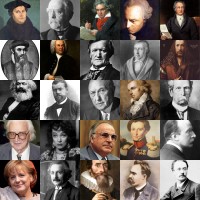


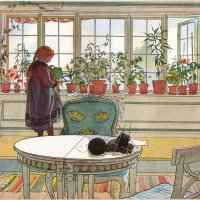
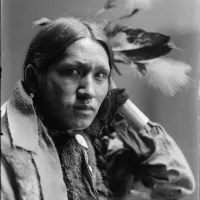
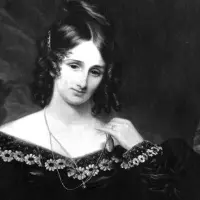
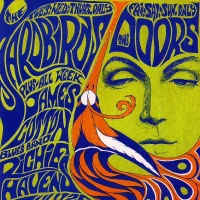
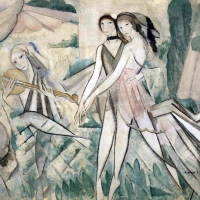
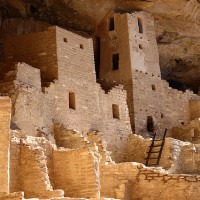
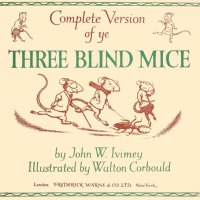
Reblogged this on Lenora's Culture Center and Foray into History.
LikeLike
Pingback: Realescort Norway I Finnmark